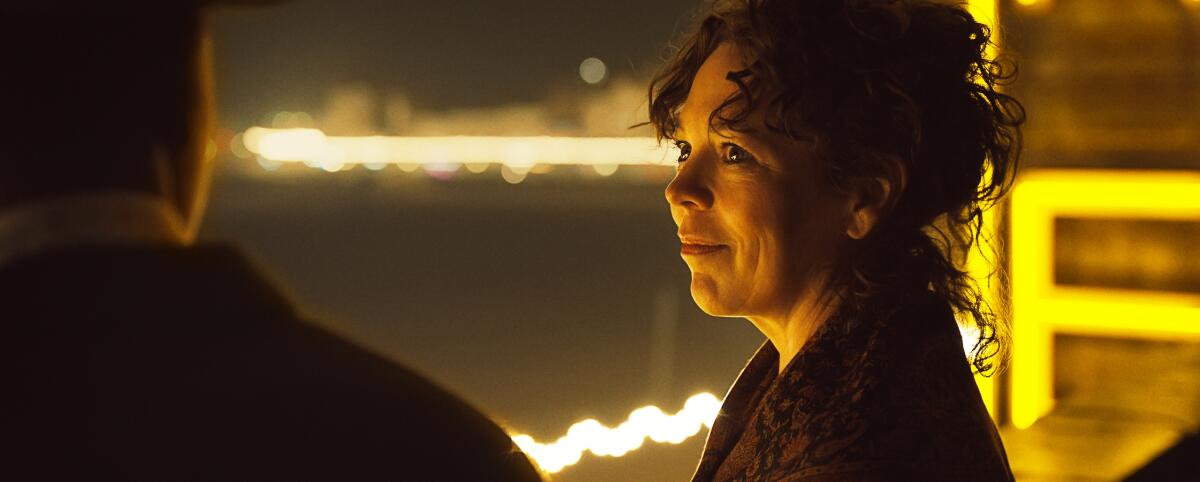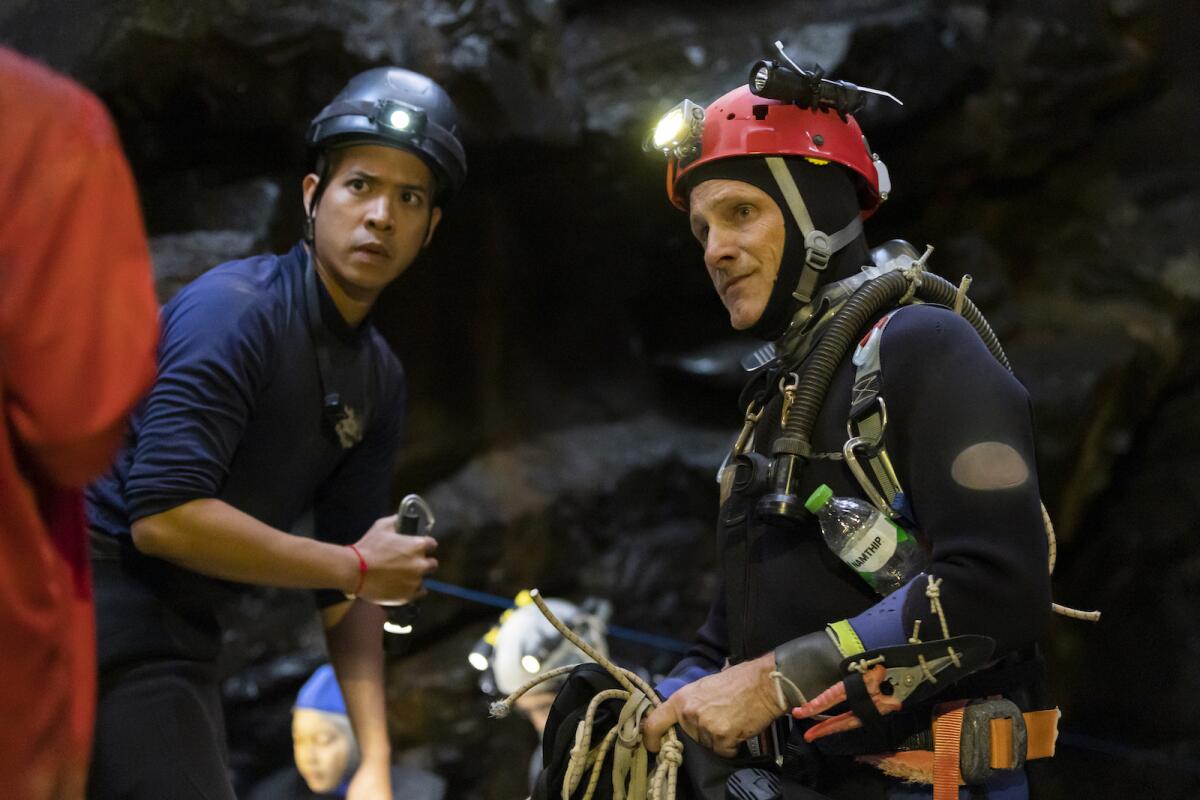What issues and surprises pop up in the edit room?

)
- Share via
“The editing room is a roller coaster,” says Ron Howard, director of Prime Video’s “Thirteen Lives,” which was edited by James Wilcox. “It’s where as a director I feel both stupid, and kind of smart. And frustrated and dejected when something isn’t working the way I hoped it might — and thrilled when ideas come together.”
That adage about how a film is made three times — on the page, on the set and in the edit — is true. Even the most carefully storyboarded and planned-out of films turn into separate beasts once editors and directors are left to assemble them. Yet with creative, flexible thinking by skilled editors and imaginative directors, changes in the edit can create a more original final film than anyone expected.
“I have a decent eye for what the actors are doing each day, but the camera invariably sees more than anyone can,” “Armageddon Time” director James Gray, whose editor was Scott Morris, says in an email. “Dramatic reactions rooted in complex thought seem to flower in close-up, and it’s one of the best things about the job of directing.”
Gray and Howard are just two directors who find that surprises run rampant in edit suites, including for films popping up in this year’s awards season. The Envelope spoke with editors behind “Empire of Light,” “The Banshees of Inisherin,” “Thirteen Lives” and “Armageddon Time” to get a peek at what happens when the cameras turn off and the splicing takes over.

“The Banshees of Inisherin”
Director: Martin McDonagh
Editor: Mikkel E.G. Nielsen
The pairing: “I was given all the material, and I did a first pass,” says Oscar-winner Nielsen (“Sound of Metal”). “That first assembly is pure structure for me; you work with characters on the next pass. Then the rhythm of the characters and tonality, like, should every scene have a joke? Martin is insanely good at working with this, and he knows his audience.”
Surprise! Small details added a lot to the choices Nielsen and McDonagh made in the edit suite, elements that made sense only once the film was starting to come together — particularly with the film’s animal cast. “You never know what’s going to work with animals,” Nielsen says. “You play and work with them and suddenly they feel like characters.” Placing a brief, happenstance shot of two small birds jumping at one another at the right place in the film gave the story a metaphor for the conflict in the community, he says. “These things are not necessarily on the page.”

“Empire of Light”
Director: Sam Mendes
Editor: Lee Smith
The pairing: “Sam is a great collaborator,” says Oscar-winner Smith (“Dunkirk”), who also worked with Mendes on “1917” and “Spectre.” “As an editor, you’re always looking for that spark from each other’s enthusiasm. Sam and I are constantly sending cuts back and forth [during shooting]. Then we move to where he lives and I work out of his house.”
Surprise! “We did move a few key events forward in the timeline, which made a huge adjustment in how you perceive the characters. Everything in editing has a house-of-cards effect.” On “1917,” he recalled how that effect was exponential, thanks to Mendes’ long, unbroken shots. “Anything I thought was problematic was basically DefCon 1 — any decision you made in post you had to make on the day,” says Smith. “That was a stress level I’d never dealt with. It completely reinvented how I edited movies.”

“Thirteen Lives”
Director: Ron Howard
Editor: James Wilcox
The pairing: “Ron is a director who shoots for the edit,” says Wilcox, who has worked with Howard on “Hillbilly Elegy” and “Genius.” “He shoots a lot of coverage.” That meant they had 382 hours to sift through to create a two-hour, seven-minute “Thirteen.” “He’s brilliant and has a plan, but he’s also open to my ideas,” adds Wilcox. “We’ve worked together long enough now that we have an instinctual collaboration and sense of how the story is going.”
Surprise! Whereas Howard points to a ceremonial scene that didn’t make it into the film — but whose audio track was successfully layered into a separate scene — as a creative surprise from the edit suite, Wilcox recalled another issue that needed remedying: The extensive underwater diving sequences couldn’t be manipulated either by speed or with stunt doubles for stars Viggo Mortensen and Colin Farrell. Wilcox ended up using point-of-view shots to give audiences a sense of what it was like for the divers underwater. “I look at Ron when he’s watching the cuts for the first time to get an impression, and when he saw these point-of-view shots we used, he got electric,” says Wilcox.

“Armageddon Time”
Director: James Gray
Editor: Scott Morris
The pairing: “James is very open to exploration — one idea will inspire another, and it’s very collaborative, very conversational,” says Morris, who’s worked with Gray on “Ad Astra” and “The Lost City of Z.” “We come [into the edit suite] with intention, but then we’re there to explore. There are always surprises.”
Surprise! Toward the end of the film, a key character dies, but without that actor present, “the film lost some of the momentum, or magic,” says Morris. “We had a decent amount of movie after that, at least 30 minutes or more.” The after-death scenes involved another character losing a loved one, and the survivors became one another’s de facto family. Moving that second loss higher up connected the deaths, and that “propelled the third act and linked them in a beautiful way,” he continues. “The film tells you what it wants to be — and a lot of this job is finding that. There are always surprises.”
More to Read
From the Oscars to the Emmys.
Get the Envelope newsletter for exclusive awards season coverage, behind-the-scenes stories from the Envelope podcast and columnist Glenn Whipp’s must-read analysis.
You may occasionally receive promotional content from the Los Angeles Times.








